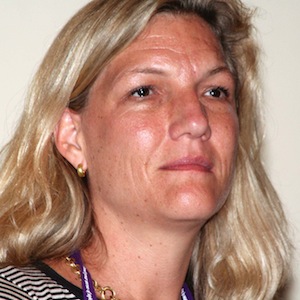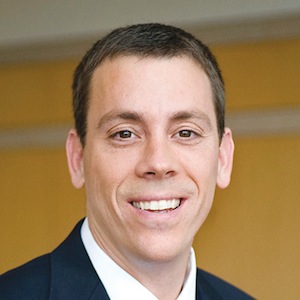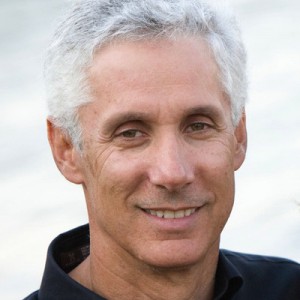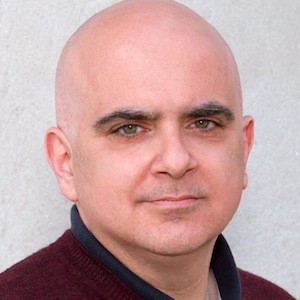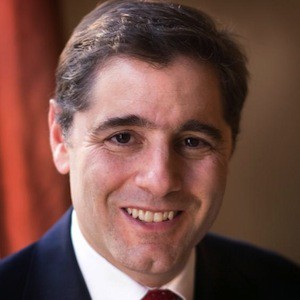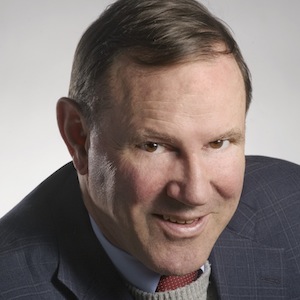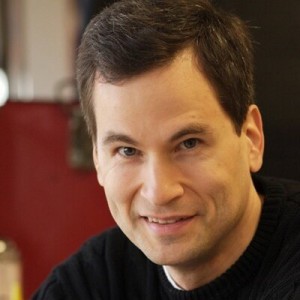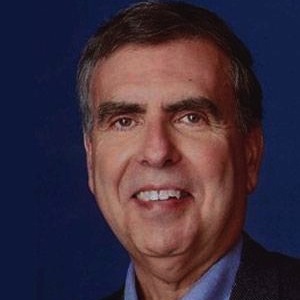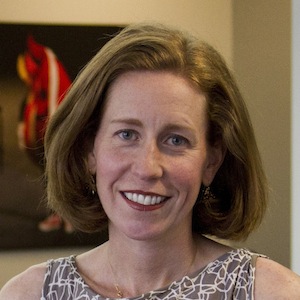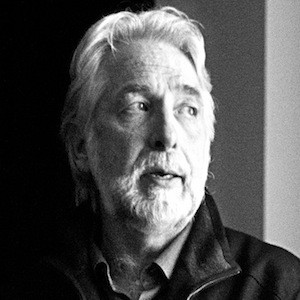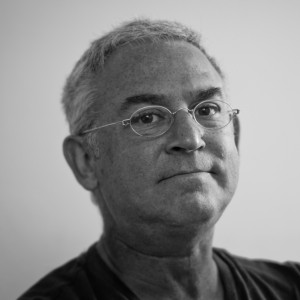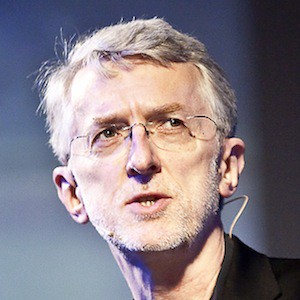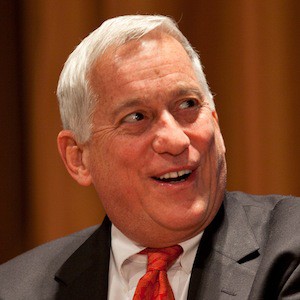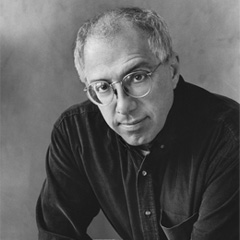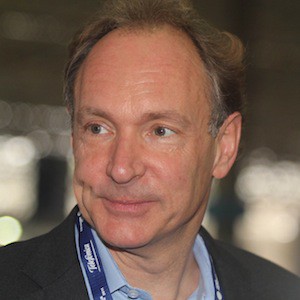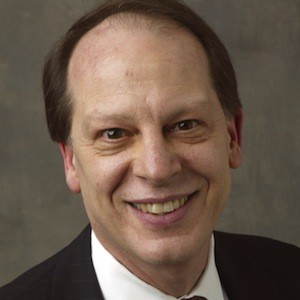Paul: It is April 5th and we’re in Washington DC with Caroline Little. It’s Paul Sagan and John Huey. Good morning. Welcome.
Caroline: Good morning. Thank you.
Paul: We started with a similar question for everybody, which is, just go back and think about the first time you really saw the power of digital technology coming into this industry, the news business. Either it was an epiphany and you said, “We’ve got to go there.” Or, “This is really going to be painful and what are we going to do about it?”
Caroline: The first time I saw it, I was working as a lawyer at “US News and World Report,” and a bunch of other entities that Mort Zuckerman owned. One was a pre print business. The whole technology of printing in magazines changing dramatically in the ’90s. At the same time, this whole concept of third party content was coming into age. We got the first AOL contract and we actually thought it was another library database contract. We didn’t pay much attention to it. Then we started realizing the possibility of commenting on news stories and the going back and forth. How does one regulate that? How does one protect it? How do you get insurance for third party content? People tell me, “It must have been really interesting working for a news magazine.” Actually, it was pretty interesting. What was really interesting was the pre print business and the coming of age of some of the AOL kinds of contracts. What I realized was, as a lawyer, it allowed one to be a lot more creative than one generally could be being a lawyer. It was like convincing the insurance companies, “Listen, this is the way it works. You should provide insurance. This is the way things are going. This is how it would work. This is how copyright applies to third party content, et cetera.” That was really exciting and fun.
John: What year would that have been?
Caroline: 1995.
Paul: Height of the proprietary services and AOL. Really pre the web taking off still.
Caroline: Right.
Paul: You obviously signed some of those deals and did what most of publishing did, which was enter that world of effectively licensing content to a new distribution channel.
Caroline: Right.
Paul: Did it seem, besides these legal issues which we had to get through, that it was just going to be another opportunity or the biggest opportunity? Or, this could get really difficult to the business. How did it seem back then? Then how did it play out?
Caroline: It seemed very complicated and difficult, but also full of opportunities.
Paul: You were there and then transitioned?
Caroline: Yeah. I had always been interested in publishing and the legal side of publishing. I thought about going back to a law firm, because a lot of law firms in the mid nineties were starting at publishing, Internet areas. But I, frankly, wasn’t dying to go back to a law firm. US News was moving its offices up to New York. I was ready for another challenge. I heard about this job at what was called Digital Inc., in Arlington, which was an outpost of The Washington Post, but was doing digital, experimental. I went out and interviewed. I thought it would be so much fun. I took the job as general counsel there. My sense, at the time was, management at the Post, Alan Spoon, Don Graham, were very open to experimentation. And purposely put Digital Inc. across the river, for experimental reasons and other reasons. But I thought it could be really fun.
Paul: You’ve touched on one of the big questions that’s still being grappled with today, which is, separate or together? You want to build off the brand, use the brand to create an audience. But there was a question of whether the traditional newsroom could be prepared to ever do this in a way that was competitive. So the Post took one path that not everyone followed. Can you talk about that? What worked and what didn’t work?
Caroline: How much time do we have? [laughs]
John: Did you have your own general counsel? Did you have your own CEO?
Caroline: Yeah. We were a separate entity.
John: Separate incorporated company?
Caroline: Yep.
Paul: With, effectively, a license to the paper’s content.
Caroline: Right.
Paul: Created your own website. You had the right to their brand. Talk about how much negotiation with the newsroom was there. One of the things we’ve talked about is, in many ways the platforms that won were automated. They just ingested stuff and spit it out quickly. The challenge for the mainstream entities was just they weren’t 24 hours. If they were newspapers, they didn’t have video. There was the whole, “Wait, you can’t break it on the web because you’ve taken the value from the morning paper.” You joined an entity that had a very specific idea about how to try to navigate that.
Caroline: At the beginning, we were so under the radar screen, and so viewed as this little thing in Arlington that people really didn’t pay much attention to us. Which was nice, in a way, because we could really experiment. It got more complicated as time went on. What I found in the newsroom, Doug Fever was the editor when I came. Wait, no. Chris Moll was the editor when I came. Then he went over to the newspaper, to corporate. Then Doug Fever came over from the newspaper. There was a feeling like, “We need a real grown up over at WPNI.” It was still Digital Inc. at the time. And a very seasoned newsroom person was there for a long time. When Doug retired, and by that time I was CEO, I felt that we needed somebody with some Internet juice. Not that Doug didn’t. But, in terms of somebody coming from the newspaper, they just didn’t have that experience. We had incredible journalistic talent, but not as much Internet experience. I knew that was going to be an incredible challenge. So I put together this panel of the top editors and people from corporate, so that everybody would feel like they had a stake.
I had Merrill Brown come in and do a technology assessment, open everything up. There was a real sense, from the newspaper, that we were shutting them out of the future and I didn’t want them to feel that way. But I also wanted them to understand that we needed different talents to drive WashingtonPost.com and Slate and Newsweek.
John: How much emphasis was there on engineering. It’s been observed that one of the things that happened was engineering ended up trumping a lot of the journalistic innovation. That most of the really successful disruptors were platforms that were created by engineers.
Caroline: I think that’s right. I think they’re at it a lot now from the business side. Anyway, let me get back to the editor. We eventually got Jim Brady, who had been at WPNI and then had gone to, oh, he had been, sorry, Digital Ink. A sports editor had gone to AOL and he came back as editor. That was a real coup to get Jim, to get the organization to agree to have Jim to come. Now, people would say, “Why did you even need to get the newspaper?” My friend was like, “We weren’t going to succeed if we didn’t have buy in from the newspaper.” Even though we were a separate entity…
Paul: Even as a separate entity across the river…
Caroline: We share content, we share a brand.
Paul: Did you feel that that was sort of an ultimate trap for these businesses, that it was just so hard to move in the way the web needed it to? Or did you not feel constrained?
Caroline: Oh, I felt very constrained. It was a very hard job because on the one hand, you’re being diplomatic with the newspaper. I don’t have the journalistic chops so I didn’t have that kind of relationship with the newsroom. I had a good relationship but not I’m not a journalist. Then really driving a team to experiment. You look at whom we’re competing with, it’s very different than the newspapers competing with. It’s funny. Over time, I think it was great for us to be on our own. Don was incredibly supportive but we didn’t have a, if you look at the model that Clark Gilbert is running in Salt Lake City, he’s a Clay Christensen…
Paul: Clay Christensen, an innovator dilemma’s disciple.
Caroline: Exactly. He’s essentially, he’ll describe it as he’s running two businesses and he is constantly there saying, “No, you guys go do this. This is what you guys need to do. Let them do what they need to do.” We didn’t really have that. Don couldn’t possibility play that role.
Paul: So talk about that. It was Digital Ink and it was across the river and it was separate. It even had started in the proprietary worlds, not even an open website, but it was…
Caroline: That was before my time. It was on an AT&T platform.
Paul: Right, exactly, and then it transitioned to the open web and it became WPNI or Washington Post Newsweek Interactive. You even moved back across the river at some point. It literally didn’t stay separate.
Caroline: No, we were always across the river.
John: Just stayed physically separate but somehow emotionally or legally or reintegrated. Explain that a little bit.
Caroline: Well, we didn’t really integrate. That was later. I know around 2006, 2007 became obviously pretty clear that the web and different platforms were going to be a huge part of any news organization. I think it became increasingly difficult for Don to say, “Let Caroline and Jim run the web and you stay at the newspaper.” I mean, that’s ridiculous, right? It also became pretty clear from a business standpoint, circulation was dropping. It had been dropping. Print ad revenues were dropping, 80/20 split of print advertising and circulation was not probably sustainable. [sighs] There was a lot of tension. Jim had organized the newsroom somewhat like the paper. You had your politics vertical and a bunch of verticals. People were getting excited at the newspaper about opportunities. This was when the whole Politico thing came up and it was just a light bulb to me. Harris and VandeHei wanted to run a political site and evidently gotten an offer from Allbritton to do so. They had come to Don and said, these are the major struts of the story. I may not have the specifics correct. Don said, “Well, you could do this at Digital Ink and WPNI at the time.”
They came over and then it became this big discussion about who would run it because Digital Ink had its own politics blog. Then there were these people from the Post. It was absurd because it became fairly clear that we were actually competing with the newspaper. They hired a blogger at one point and that was just a big, huge issue.
If you look at the economics of it, you’re thinking, “Now so wait a second. I’m here at WPNI and we’re hiring all these politics bloggers and whatever and then the newspaper has all their people. They’re doing one kind of reporting and we’re doing another kind of reporting. Technology demands that this is all about storytelling, so how do you tell the story in the best way? If you’re going to hire a journalist today, you’re going to want them to have the skill set to do all of that and to allow them to choose to tell the story in the best way.”
We had these constructs that were actually impeding, in my view, the best journalism. It was also incredibly tense and from my standpoint, very unpleasant because it was just untenable to try to bridge these gaps.
John: Just to continue with that to the end, they leave the Post and go start Politico. Does that have repercussions at WPNI or at the Post?
Caroline: I don’t know. I think it was a big blow for the newspaper to lose them. It was clear to me that we couldn’t move fast enough and coordinate enough because we had our own issues among us. I thought we, at the digital division, because the newspaper’s so strong, because the newspaper has history of great journalists, we were trying to be like them. There was this incredible pull to be like the newspaper. We were kind of losing our identity in a way.
Paul: Your web identity.
Caroline: Our web identity and our web path. So at the same time all of this is going on, people had always said, “Well, the web, digital revenues will make up for, will cover the newsroom.” And I’m thinking, like, OK, so we’re making, about 15 percent of our overall revenue was coming from digital. And that was strong. I mean, the New York Times and us had the strongest at that point. And I’m thinking, “How are we going to pay for the newsroom? I don’t think I can do this!”
John: And the margins are shrinking, right?
Caroline: Yes, and the margins are shrinking. And overall, I think about it now watching these businesses and watching the transformation, and I think what we had wrong was, it’s not about print versus digital. And that’s really, really limiting yourself, sort of thinking about it in those terms. And it’s, how do we take these brands and move to a transformation in a digital world? I mean, hindsight is always 20/20, but the model of selling print advertising in a local market where there’s not a lot of competition, to say the least, 25 years ago, and transferring that to trying to sell digital in a completely wide open world against content, I wouldn’t bet the house on that. And it’s certainly one very important part, but it’s not going to make up for the world 20 years ago.
John: It seems like there’s a conundrum that you needed to get away from the mothership to foster the kind of innovation and cultural atmosphere that you needed to get launched. But then, when exactly is the right time to integrate that with the core product and try to turn it into an integrated business that can leverage off each other? And the Post would be an example of the extreme keeping them apart for a long time, I would think.
Caroline: I think that’s true, and I think when you put them back together, my sense was, with the exception of maybe one person, digital was kind of subsumed back into print. Of course, since I came from the digital side, I think you probably know my answer to that. But it didn’t feel like a kind of new entity from a distance.
John: So, you returned to the old form.
Caroline: Yeah. I mean, even physically, people moved into the newspaper.
Paul: So, you left in what year?
Caroline: I left in 2008. Don was very gracious and said, “Come and work in corporate.” And I didn’t want to be bitter, and I thought I would become bitter sort of watching things being taken apart. So, I left and I took some time off, and then I started working with The Guardian. And I had always admired The Guardian from a web perspective. What was really interesting about The Guardian was that I was hired by the head business guy there, a guy named Tim Brooks, who’s no longer there. And, at that time at least, things had changed. The business side didn’t even talk to the editorial side, as far as I could tell, and the editorial side called the shots, big time. And so, I was working with them. I was running paidcontent here before it was sold and trying to gin up their U.S. presence, which was actually substantial, but they didn’t really have a plan. So, I did that for a couple of years, and then I went to the Newspaper Association.
Paul: So, talk about that current chapter, because now all your members are dealing with this challenge, and we are seeing the end of daily papers, right? We’re seeing these…
Caroline: In some cases.
Paul: In some cases. So, we’ve got people experimenting with no paper, very few, or the weekend version, effectively which we’re seeing, and a lot still trying to do six or seven days and make digital cover more. How do you see that playing out, and how do you see those various, really, experiments today? And even, ones that are trying to keep the traditional seven days going are almost an experiment, which is that model going to play out in how you…? I know you can’t pick a winner, and they’re all kind of your children now…
Caroline: Right.
Paul: But, how do you see that playing out, and what do you hear from them?
Caroline: Well, when I was first approached about this job I was sort of like, you’ve got to be kidding me [laughs] . And coming from the digital side, there is this perception like, oh, they don’t get it. And I thought, you want me? And I thought, why would they want me? But, when I interviewed for the job, and this was three or four years after I left, three and a half years after I left the Post, I actually saw a lot more willingness to experiment than I did in 2007, 2008, and maybe it was the bottom out of 2009, I mean, that will make people really look at other things.
So on the experimentation, I actually think it’s really good that there’s experimentation. Most of the papers that are doing the kind of, “We’re not going to publish every day” are very quiet about what the results are, so I don’t even know.
It’s not unlike the politico model where they’re publishing a print newspaper two or three times a week. I don’t know how often it is, actually, but I suspect that the print advertising covers a lot more than digital does, and they’ve cut their cost substantially and they’re still publishing. And they’ve done that in places where there is significant web engagement, like New Orleans.
You know, one of the frustrations about doing this job is people just say, “Newspapers are dead.” And all media has been disrupted in the past 10, 15 years. The saddest part for me is, when I came to the Newspaper Association, which pretty much does things the way that they’ve been doing things for a long time, we were publishing the print advertising numbers and the print circulation numbers every quarter.
And every quarter, we’d send out a press release, which would start something like, “For the 21st quarter in a row, the newspaper industry has lost X, X, and X.” And I’m like, we’re press releasing this? I mean, it was so hard just to stop doing the press release, but at the same time you think, “Well, you’re the trade association, you could make the numbers transparent.” So, I did a little study, and I found that every time we released those numbers, about 100 stories would come out citing the NAA members saying the newspaper industry is dead.
So meanwhile, the board is telling me, you know, we’ve got to get that. We’re not suffering. We’ve got challenges, but everybody’s challenged. We should get a PR firm. And I’m like, great, we can get a PR firm, but we’ve got to change the numbers and metrics, because we’re going to get the same story.
Paul: You were leading with your chin.
Caroline: Which we do quite well. So, in the last couple months, actually, I said, we’ve got to look at this pie. I know we don’t have to give all these numbers out publicly, some of these are really small numbers. But let’s look at print advertising, digital advertising, digital subscriptions, print subscriptions, events, e commerce marketing, all of the various things that newspapers are doing. And if we just look at what we’ve been measuring things on, we were down maybe nine percent over. And any publisher you talk to, I’m sure they’ll say, yes, we’re going to be lower on advertising. We were actually down two percent last year, because that, you know, 80 to 20, sorry, that 80 to 20 model was moving more to a 60 percent advertising model, 40 percent other. And to me, it shows that we really are in transformation. Things are moving. It’s not easy and it’s not necessarily growing, but it’s not dying the way that the industry is pictured.
John: Which ironically, is most often pictured that way by newspapers.
Caroline: Yes. Well, it’s really interesting, because we actually have this study embargoed until Monday, and a lot of journalists are quite interested in the story. So yes, we’re really good at slamming things.
John: So, when you look back at all this and you look at the issues like the legacy culture versus the innovative culture, and journalists versus engineering, central versus divided in different corporations, is there anything that anybody did that you think made a big difference in the other direction from the way it worked out for you at the Post? And in the end, would it have made much of a difference anyway, or was this just the tide taking the swimmers out to sea?
Caroline: I think this is growing pains. I do think some of this is growing pains. I mean, you have people with the best intentions and the greatest hopes, and the passion about reporting in whatever media. You know, I go back to Clark Gilbert. What he’s done, he’s actually been more radical in the newsroom in some ways, which I think is really healthy. He combined a newsroom of a radio and his own newspaper newsroom.
And he said, “OK, breaking news, we’re going to put here in a breaking news pod, or whatever. We’re going to invest in these five areas, family, faith, X, Y, and Z. We know that our audience is really interested in this, and we’re going to take these people and put them in a separate newsroom where they are going to be able to do long enterprise pieces,” and he actually hired more people to do that. I mean, that’s pretty smart.
You know, hindsight is 20/20. Maybe it’s easier to be able to conceive of those things when you’re looking at the whole thing. We were sort of looking at digital, and the more we felt threatened by the newspaper, the more we sort of crouched down and did our own thing without kind of looking at the whole enterprise.
John: Well, but to be fair to you and everybody else in that business, there was an arc. Digital was growing, and it was the future, and it was going to save the business. Then it flattened out and then it started declining. It turned out, “Oh, maybe it isn’t going to save the business.” It’s the future of the business but it’s not going to instantly turn into replacing these previous revenue models that included circulation. So, how much time, in your tenure, did you spend thinking about paid versus free and wrestling with that whole issue?
Caroline: That was just so off the table by the user. I don’t think we could imagine. The FT and The Wall Street Journal had models. Consumers aren’t ready to pay. They’re not going to pay. Those are business models. You talk to Martin, I think he felt a little bit, “Oh, man. Is going to charge. This is against our ethos,” at the beginning. Now you hear people doing that all the time.
Paul: Maybe this should be the last question, which is just now that the ethos has changed and people are starting to switch, including the Post, some people now look back and there’s always this easy hindsight criticism which is now it was an original sin to go free. We just should have waited, should have been patient. It wasn’t just the newspapers. It was magazines. Even some of the pay cable channels, at least. We all went free for that. We just had to try it and there was enough free stuff. Now some people are looking back and saying, “You just made a big mistake.” Do you think it could have been done a different way? Do you think a different decision could have been made or would that have just simply made it just not come out of the gate at all?
Caroline: Well, we tried that at The Post. 12.95 a month, and it was a complete disaster in 1996, I guess, they tried it. People forget to realize, not forget, is the Washington Post cost 25 cents 15 years ago. That was very heavily subsidized. That wasn’t the true price of the paper. Consumers, things are changing. I guess, thanks to Apple, I think, and Netflix and the cable channels, we’ve gotten used to paying for content. So I guess I…
Paul: It played out as it had to.
Caroline: It plays out as it has to, yeah.
